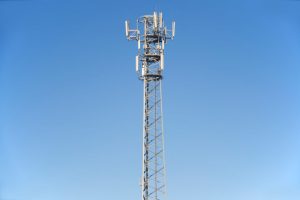
GEO Satellites: Understanding the Technology and Applications
GEO satellites, or Geostationary Earth Orbit satellites, are a type of satellite that orbits the Earth at an altitude of approximately 36,000 kilometers above the equator. At this altitude, the satellite’s orbital period matches the Earth’s rotational period, allowing it to remain stationary relative to a fixed point on the Earth’s surface. This unique characteristic makes GEO satellites ideal for a variety of applications, including telecommunications, weather forecasting, and Earth observation.
The technology behind GEO satellites is complex and involves a range of advanced systems and components. The satellite itself is typically equipped with a range of instruments, including transponders, antennas, and solar panels. The transponders are used to receive and transmit signals, while the antennas are used to communicate with Earth stations and other satellites. The solar panels provide power to the satellite, allowing it to operate for extended periods of time.
Applications of GEO Satellites
GEO satellites have a wide range of applications, including telecommunications, broadcasting, weather forecasting, and Earth observation. In the field of telecommunications, GEO satellites are used to provide internet connectivity, voice communications, and data transmission services. They are particularly useful in remote or underserved areas where traditional telecommunications infrastructure is lacking.
In addition to telecommunications, GEO satellites are also used for broadcasting purposes. They can be used to transmit television signals, radio signals, and other types of content to a wide audience. This is particularly useful for reaching remote or isolated communities where traditional broadcasting infrastructure is not available.
Weather forecasting is another important application of GEO satellites. By orbiting the Earth at a fixed point, GEO satellites can provide continuous monitoring of weather patterns and storms. This allows meteorologists to track the movement and development of weather systems, providing accurate forecasts and warnings to the public.
Finally, GEO satellites are also used for Earth observation purposes. They can be equipped with a range of instruments, including cameras, spectrometers, and radar systems, to monitor the Earth’s surface and atmosphere. This allows scientists to study the Earth’s climate, monitor natural disasters, and track changes in the environment.
Benefits and Challenges of GEO Satellites
GEO satellites offer a range of benefits, including global coverage, high bandwidth, and reliability. They can provide internet connectivity and telecommunications services to remote or underserved areas, and can be used to broadcast content to a wide audience. Additionally, GEO satellites can provide continuous monitoring of weather patterns and Earth observation data, allowing scientists to study the Earth’s climate and environment.
However, GEO satellites also face a number of challenges. One of the main challenges is the high cost of launching and operating a GEO satellite. The cost of building and launching a satellite can be hundreds of millions of dollars, and the cost of operating and maintaining the satellite can be tens of millions of dollars per year. Additionally, GEO satellites are subject to a range of environmental and technical challenges, including solar flares, cosmic radiation, and orbital debris.
Future of GEO Satellites
Despite the challenges facing GEO satellites, they are likely to continue playing an important role in modern telecommunications and Earth observation. Advances in technology are making it possible to build smaller, more efficient satellites that can be launched at a lower cost. Additionally, the development of new applications, such as satellite-based internet connectivity and Earth observation services, is expected to drive growth in the GEO satellite market.
In conclusion, GEO satellites are a critical component of modern telecommunications and Earth observation. Their unique characteristics, including their geostationary orbit and high bandwidth, make them ideal for a range of applications, from telecommunications and broadcasting to weather forecasting and Earth observation. While they face a number of challenges, including high costs and environmental risks, advances in technology and the development of new applications are expected to drive growth in the GEO satellite market.





